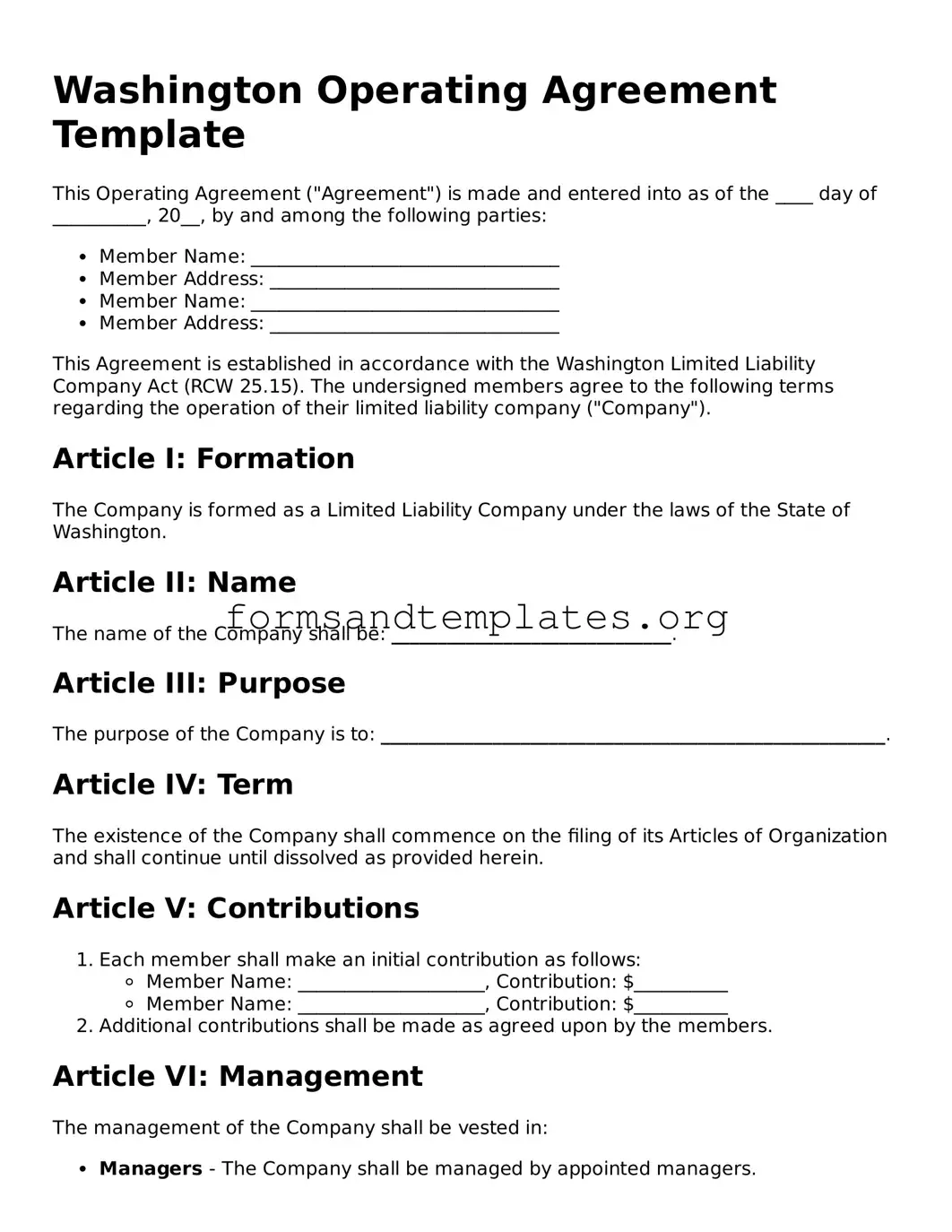Washington Operating Agreement Template
This Operating Agreement ("Agreement") is made and entered into as of the ____ day of __________, 20__, by and among the following parties:
- Member Name: _________________________________
- Member Address: _______________________________
- Member Name: _________________________________
- Member Address: _______________________________
This Agreement is established in accordance with the Washington Limited Liability Company Act (RCW 25.15). The undersigned members agree to the following terms regarding the operation of their limited liability company ("Company").
Article I: Formation
The Company is formed as a Limited Liability Company under the laws of the State of Washington.
Article II: Name
The name of the Company shall be: ______________________________.
Article III: Purpose
The purpose of the Company is to: ______________________________________________________.
Article IV: Term
The existence of the Company shall commence on the filing of its Articles of Organization and shall continue until dissolved as provided herein.
Article V: Contributions
- Each member shall make an initial contribution as follows:
- Member Name: ____________________, Contribution: $__________
- Member Name: ____________________, Contribution: $__________
- Additional contributions shall be made as agreed upon by the members.
Article VI: Management
The management of the Company shall be vested in:
- Managers - The Company shall be managed by appointed managers.
- Members - The Company may also be managed by members, as mutually agreed upon.
Article VII: Voting
Each member shall have voting rights in proportion to their respective ownership interest in the Company.
Article VIII: Distributions
Distributions to members shall be based upon their respective ownership interests, unless otherwise agreed.
Article IX: Amendment
This Agreement may be amended only by written consent of all members.
Article X: Governing Law
This Agreement shall be governed by and construed in accordance with the laws of the State of Washington.
IN WITNESS WHEREOF, the members have executed this Operating Agreement as of the date first above written.
______________________________, Member
______________________________, Member
Date: ___________________
